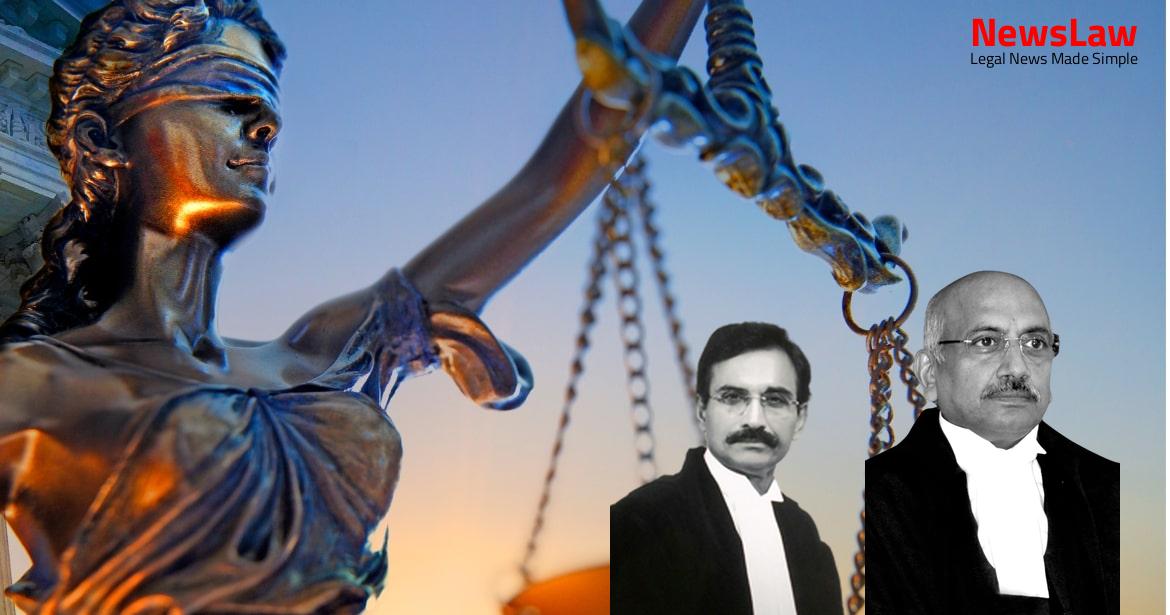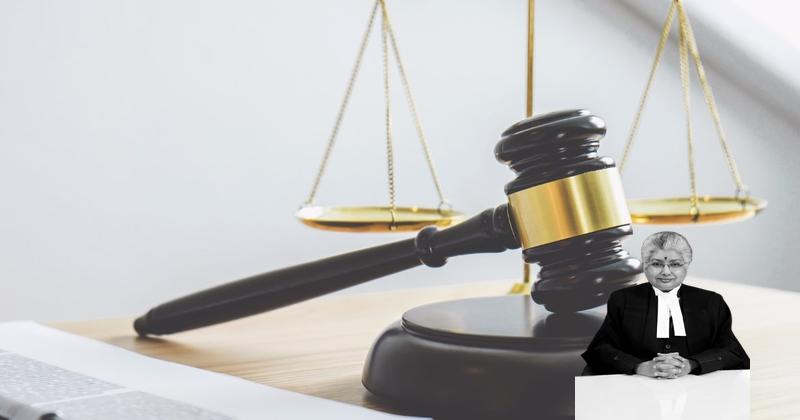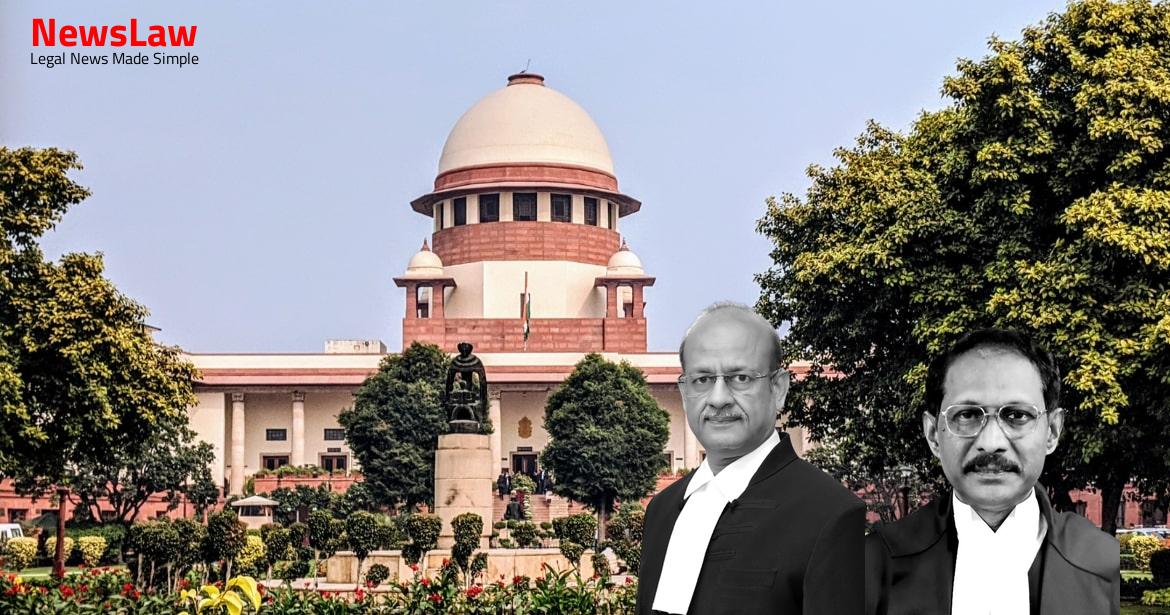In a significant legal ruling by the Supreme Court of India, the judgment in the case of recovery of a dead body has been delivered. The case, known as Nika Ram v. State of Himachal Pradesh, involves crucial aspects of evidence, burden of proof, and incriminating circumstances. This blog post delves deeper into the details of the case and the court’s decision. #SupremeCourt #LegalCase #JusticeServed
Facts
- Phurba Lepcha (PW-4) witnessed the disclosure statement made by Mamta Mohanta leading to the recovery of the dead body of Netai Mohanta.
- The dead body was found concealed under wooden flooring at the residence.
- The FIR was initially lodged in Bengali and later translated into Nepali.
- The dead body was discovered packed in a gunny bag after the wooden planks were removed from the floor.
- Accused Mamta Mohanta’s statement was recorded under Section 27 of the Indian Evidence Act, 1872.
- Bhola Mohanta (PW-1) identified the dead body.
- The postmortem was conducted on-site where the body was found.
- The Police broke open the door of a portion of the house in Bhola Mohanta’s presence.
- The accused stated that her husband was murdered by Ranjit Haldar and his nephew, Puran Bandhu Mondal.
- The body was found in an advanced stage of putrefaction and had been concealed under a wooden floor.
- The FIR was not sent to the Magistrate, casting doubt on its credibility.
Also Read: Property Inheritance Dispute: The Legacy of Chhotabhai Ashabhai Patel
Arguments
- Learned counsel for the appellants argued that the original FIR was recorded in Bengali and translated into Nepali for prosecution.
- Krishna Kanta Burman, who facilitated the translation of the FIR, was not examined by the prosecution.
- The appellants’ counsel emphasized this as a crucial point in the case.
- Argument presented by the learned counsel for the appellants is that the recovery of the dead body was instigated by Mamta Mohanta, not based on appellant Ranjit Haldar’s disclosure statement.
- The witness mentioned that one boy who lived with the accused initially left the place.
- No DNA examination was conducted to verify if the recovered body was that of deceased Netai Mohanta.
- The statements regarding the identification of the dead body by witnesses are inconsistent and raise doubts about completing the chain of circumstances for convicting the appellants.
- The appellants were not residing in the house when the dead body was recovered, leading to a defense claim that the prosecution failed to prove their possession of the property during that time.
- The learned counsel for the appellants referred to the judgment in Sudam Charan Dash v. State of Orissa & Anr. to emphasize the importance of informing the Magistrate as a crucial chain of events in investigations.
- Witness Jamyang Bhutia (PW-5) stated that he rented two rooms in his house to Ranjit Haldar.
Also Read: Lt. Col. Om Dutt Sharma vs. Ministry of Defence: OROP Entitlement for Army Postal Service Personnel
Analysis
- Section 106 of the Act places the burden of proof on the accused to show that someone else had access to the premises during their absence.
- The prosecution provided evidence through witnesses like Jamyang Bhutia (PW-5) and Ravi Deb (PW-3) that the accused had rented the house where the dead body was found.
- The dead body was identified by clothing and recovered based on the disclosure statement of the deceased’s wife.
- The investigating officer conducted the investigation independently of the information in the First Information Report.
- The recovery of the dead body was a strong incriminating circumstance against the accused.
- The statement of Doma Lepcha (PW-2) also supported the prosecution’s case.
- The absence of questioning or dispute regarding the renting of the premises by the accused strengthens the prosecution’s case.
- The cross-examination did not challenge the fact that the accused had rented the house where the dead body was found.
- The recovery of the dead body from the house where Mamta Mohanta was allegedly living further incriminates her.
- The absence of a specific translator during the lodging of the First Information Report is deemed inconsequential.
- Absence of cogent explanation by the accused indicates responsibility for the crime – Nika Ram v. State of Himachal Pradesh
- Burden of proving guilt on the prosecution but certain facts may be known only to the accused – State of Rajasthan v. Thakur Singh
- Certain facts pertaining to a crime may only be known to the accused – Dnyaneshwar v. State of Maharashtra
- Evidence connecting accused to the crime, such as being seen together before the offence or the location of the crime, can shift burden of proof – Ram Gulab Chaudhary & Ors. v. State of Bihar, Shambu Nath Mehra v. State of Ajmer, Trimukh Maroti Kirkan v. State of Maharashtra
- Courts below correctly convicted the appellants for causing the death of Netai Mohanta.
- There is no error in the judgment passed by the Courts below.
- No interference is warranted in the judgement.
Also Read: Financial Capacity and Specific Performance: A Landmark Judgment by the Supreme Court Of India
Decision
- The appeals were dismissed by the court.
- The specific part (RPC) of the judgement was referenced.
- No further action was taken based on the appeals.
Case Title: RANJIT KUMAR HALDAR Vs. THE STATE OF SIKKIM
Case Number: Crl.A. No.-000427-000427 / 2014



